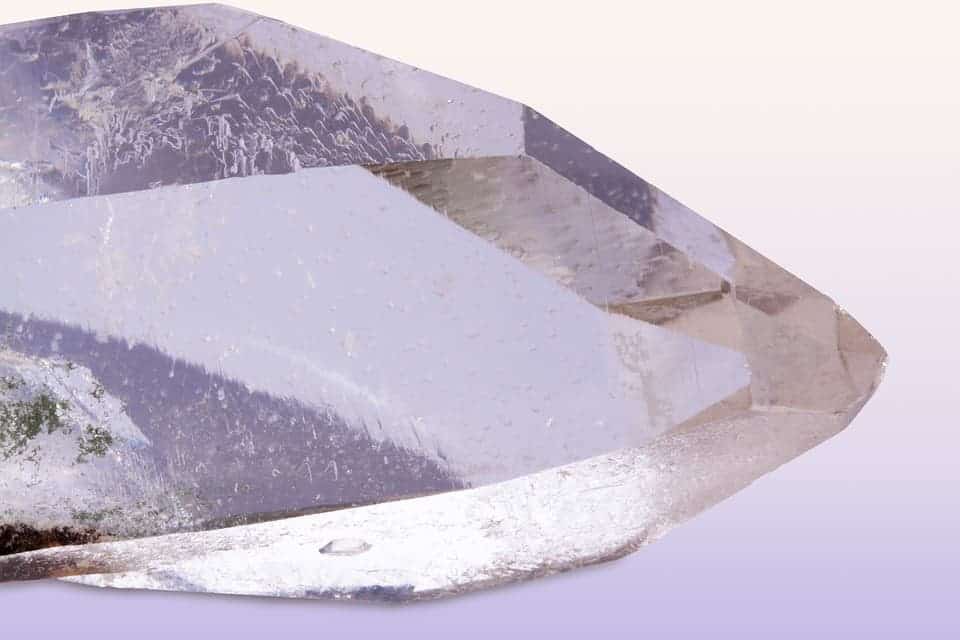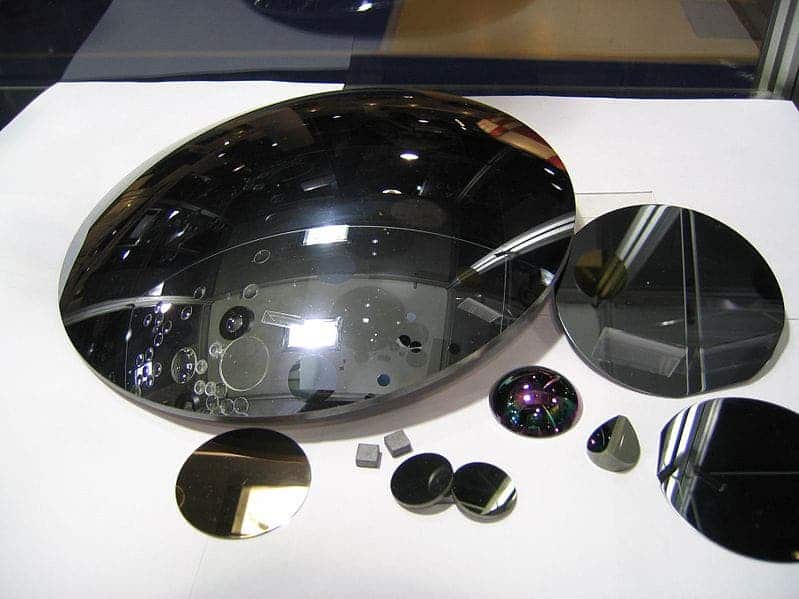Scientists have successfully nudged a strain of bacteria to create carbon-silicon bonds for the first time. Such research will help flesh out our understanding of silicon-based life — which doesn’t appear on Earth but could on other planets.

Quartz, or rock crystal, the second most abundant mineral in the Earth’s crust, is a mixture of (mostly) silicon and oxygen. The first most abundant mineral, feldspar, also contains (mostly) silicon.
Image credits Stefan Schweihofer.
You may not think of it much, but silicon is actually really common here on good ole Earth — it’s the second most common element in our planet’s crust after oxygen. About nine-tenths of crustal rocks contain silicon in the form of silica or other silicates. The processor that’s allowing you to read ZME Science contains silicon — the glass panes on your windows, too. It’s so ubiquitous in our planet’s chemical makeup that a geologist can tell you which volcanoes will explode, and which would simply ‘flow’ on eruption, just by looking at how much silicon its magma contains. Sitting just one step away from carbon in the periodic table, silicon shares most of the properties that made carbon ideally suited for organic use.
Which makes the following point that much more curious: life as we know it simply isn’t that big on using silicon. It pops up here and there, in the tissues of certain plants or the shells of some marine organisms, but surprisingly little overall. Instead, Earthlings much prefer carbon.
Research from the California Institute of Technology, however, may put the element back on biology’s menu. The team successfully coaxed E.coli into producing a protein that can form carbon-silicon (C-Si) bonds. Their work sheds more light on why the latter element seems to be shunned by Earthly life, and where we might find organisms that don’t feel the same way.
Silly cons
The team started by engineering a strain of E. coli bacteria to produce a protein normally found in bacteria from Icelandic hot springs which can bind silicon to carbon. When the team first used their engineered strain to produce the protein in question, the compound proved to be very inefficient. Successive iterations and natural mutations, however, resulted in an enzyme that could forge organic silicon molecules some 15 times more efficiently than any chemical process the team could apply to the same goal. Using this molecule, the team produced twenty organic C-Si compounds, all of which proved to be stable.
So, by this step, they had proven that life can incorporate silicon — it’s just that it doesn’t particularly want to.
“You might argue, gosh, it’s so easy for a biological system to do it, how do you know it’s not being done out there?” says coauthor Frances Arnold. “We don’t really know, but it’s highly unlikely.”
Arnold was referring to other planets in this context, but the point he’s trying to make can also be applied to Earth. Do we know beyond a doubt that there isn’t silicon life on Earth? Well, no. But we have reasonable grounds to assume that there isn’t.
The issue here is a problem of availability. Silicon is much more common on Earth than carbon, but virtually all of it is extremely costly for life to access. Silicon is so prevalent in the crust because it’s a huge fan of oxygen, and it will bind with any available atom of the gas to form rocks. All of the silicon compounds that the team fed their bacteria to make these new compounds were manmade and life wouldn’t have any chance of finding them in the wild.
Carbon, on the other hand, is very stable chemically. Its relative lack of interest in hooking up with oxygen is especially useful for life, as it can use the atom to create huge molecules without much risk of them oxidizing and breaking apart. It also allows carbon to exist in a pure state (graphite for example) in nature, while silicon can’t — this is a very important distinction, as in molecular ‘economy’, this means carbon can be acquired at a much, much lower price (energy expenditure) than silicon. Finally, when you burn carbon you get a gas that can then be re-used by life; silicon lacks this perk.

But it can be quite shiny, as these silicon optic pieces showcase.
Image credits Crystaltechno / Wikimedia.
Finally, silicon-based life couldn’t use water as carbon-based life does; the two simply don’t have chemistry. Instead, it would have to substitute another liquid, such as methane, for the job — but that’s not stable under normal conditions on Earth, either.
In the end, the heart of the matter isn’t that silicon can’t be a foundation for life — it’s just that, on Earth, carbon can do the job much more easily, at greater efficiency, and at a lower cost. The ‘job’ here being life.
However, that’s not to say silicon-carbon bonds aren’t useful. We produce such compounds in the lab all the time and use them in products ranging from electronics to pharmaceuticals. The team hopes that their bacteria can help produce these substances much faster, much more cheaply, and with a lesser environmental footprint. It could also open the way to whole new materials.
“An enzyme can do what chemists thought only they could do,” Arnold says.“The chemical bond could appear in thousands and thousands of different molecules, some of which could be useful,”
“They’re all completely new chemical entities that are easily available now just by asking bacteria to make them.”
Silly life
Beyond the immediate practical considerations, the research also begs the question: is Earth-based silicon life feasible? The results showed, at the very least, that silicon isn’t harmful to life as we know it. Perhaps, if life had ready access to the element, it would incorporate it more in its structures and processes, despite its limitations.
And that invites the question of whether life can be made to incorporate elements that we’ve never seen it use before.
“What happens when you incorporate other elements?” Arnold asks. “Can nature even do that?”
“Presumably we could make components of life that incorporate silicon—maybe silicon fat or silicon-containing proteins—and ask, what does life do with that? Is the cell blind to whether carbon is there or silicon is there? Does the cell just spit it out? Does the cell eat it? Does it provide new functions that life didn’t have before?”
“I’d like to see what fraction of things that chemists have figured out we could actually teach nature to do. Then we really could replace chemical factories with bacteria.”
One particularly well-suited solution to the limitations of silicon on our Earth is to move the context to another planet. Any seasoned lover of sci-fi, and I proudly count myself among their number, has run into the idea of silicon-based aliens at least once. For now, the “alien life” part remains in the domain of fantasy, but the chemistry behind that idea is very firmly lodged in the domain of science. For example Titan, Saturn’s largest moon, sports a chilly average temperature of -179° Celsius (-290° Fahrenheit), very little oxygen (that’s locked in water ice), and an abundance of methane rivers and lakes.
[Read Further] Yes that’s weird, but the weather gets even weirder on other planets — even simple rain.
In this context, silicon would be much better suited as a biochemical base for life than carbon. In what is perhaps a sprinkling of cosmic irony, however, Titan sports a lot of carbon (even more than Earth), but precious little silicon — and most of it is buried deep, near the moon’s core. But it goes to show that there are worlds out there where silicon is the way to go, not carbon. Overall our chances of finding silicon-based life, or life that incorporates silicon, are pretty slim. And that, again, comes down to the fact that carbon is the more stable of the lot. In the grand scheme of things, there can be silicon life out there — but it will probably be pretty rare.
Still, for now, research into C-Si bonds could usher in a new method of cheaply producing what, today, are relatively pricey compounds. And organic silicon compounds could have very valuable uses in medicine and other applications. So, while we look and pine for silicon-based life out in the universe, we stand to gain a lot from studying it on Earth.
The paper “Directed evolution of cytochrome c for carbon–silicon bond formation: Bringing silicon to life” has been published in the journal Science.









